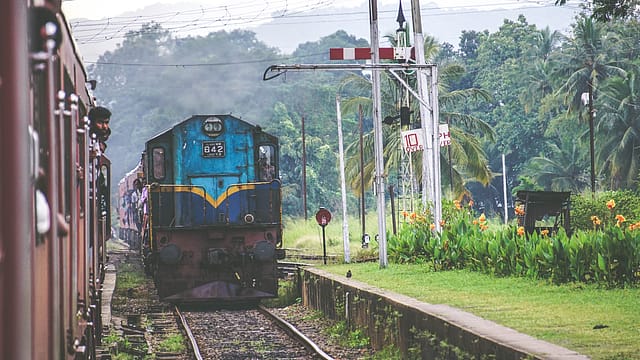Reforming Indian Railways
ADVERTISEMENT

I write this as a child of the Indian Railways. My father only ever held one job in his life—as a civil engineer (specialising in working on urban subway rail services or ‘metro rails’). His early career was spent in industrial and railway towns abuzz with activity.
Most of my childhood was spent going up and down the country in trains. We rarely travelled in planes, few around us did. Planes seemed remote and distant. But trains were fun, the journeys stretched yawningly, the slow hours punctuated by bouts of singing, sleeping, and eating.
Started in 1853 when India was still under the British Raj, the Railways is India’s biggest employer with around 1.4 million people working for it and maintains one of the longest networks in the world.
But when I grew older, I never took a train ride. Booking a ticket was a nightmare. Often one had to pay bribes, and trains (especially the toilets) were unclean, and the food seemed like it had come from extremely iffy kitchens.
All this has started to change. Stations are cleaner, the waiting rooms spiffier, food options better, and the sheets and toilets look properly washed these days.
January 2026
Netflix, which has been in India for a decade, has successfully struck a balance between high-class premium content and pricing that attracts a range of customers. Find out how the U.S. streaming giant evolved in India, plus an exclusive interview with CEO Ted Sarandos. Also read about the Best Investments for 2026, and how rising growth and easing inflation will come in handy for finance minister Nirmala Sitharaman as she prepares Budget 2026.
New ideas which railway workers of my father’s generation never thought possible—like private trains—are coming in. India now has plans to run 150 private trains on 100 routes, and the state-run Indian Railway Catering and Tourism Corporation (IRCTC), which has gone from running a brutally painful ticket-booking website to a rather smooth and efficient one, debuted on the stock markets with its shares listing at double the issue price. My father was agape at the thought that IRCTC could actually list on the stock markets. The winds of a bullet train, hiccup-y as they maybe, have started to float in.
But that’s not all. The Indian Railways has just brought in what is potentially its biggest and most important reform. It has merged eight different subsections (and cadres) within the network into one, ending decades of endless turf wars. This is the first time in independent India’s history that the Indian Railways will work as one service, one organisation. That it comes in a year when the organisation is also celebrating its safest year in history with zero passenger deaths in accidents.
It is easy to underestimate how difficult such reform is and how vital it was. The Indian Railways remains, and will remain, the most important way for most Indians to travel, especially at a time when environmental concerns are pushing the case of train travel much higher than both flights, or by car.
Many Indians today are willing to pay a bit more to travel by train if the system is more efficient, safe, clean, and relatively free of delays. For the first time this year, private train operators have started offering penalties to passengers for the delay—almost miraculous in a service known for its incessant delays. Checking whether the train ‘was coming at the right time’ or ‘on time’ is a hard-etched memory from my childhood, and more often than not, the train never did turn up on time.
Now it seems, one by one, these issues are getting resolved. Who would have thought that we would live in a time when a minister in charge of railways would be tweeting out photos of clean platforms and cosy waiting rooms?
But we are, and that seems like a miracle. Perhaps the Indian Railways can finally live up to its grand potential of delivering some of the most memorable train journeys in the world.
Views are personal.
The author is a historian and a multiple award-winning author.
